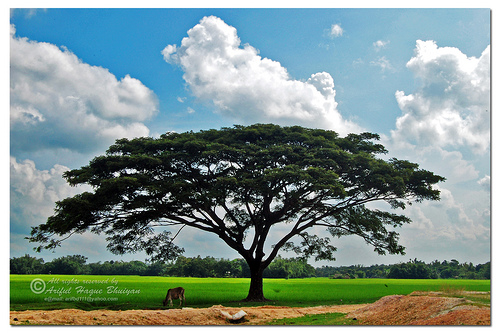There is a vibrant expatriate community in Bangladesh and many of them work as volunteers or are employed in numerous non-government organizations. Some of them are also blogging and are sharing their experiences and these are generally true and more authentic than what is reported by the international media about Bangladesh. These views are extremely useful for those who are coming to visit Bangladesh and for Bangladeshis too. In the first post of this series I will highlight some of these expat bloggers and what they are talking about.
Nikkibomb at Amar Bangla Na travels to the Chittagong Hill Tracts and writes:
The Chittagong Hill Tracts are unrelentingly green. Everywhere you look, it's that lush color that Bangladeshis love to wear.
Estelle Visagie was also in the Hill tracts in Rangamati where she found three lady Buddhist monks and was given a Chakma name.
Sara, who is studying and researching under a Fulbright scholarship posts plenty of pictures and her experiences of mingling with the Bangladeshis.

Nature in Bangladesh; Durgapur, Netrokona, By Ariful Haque Bhuiyan (http://www.flickr.com/photos/arifbd111/3401682813/), used under a Creative Commons license
Amy Moyer escaped from the frantic life of the capital and writes:
We ended the trip with a visit to the village where Jamdani cloth is hand woven. Jamdani is incredibly fine, light weight muslin that is a specialty of Bangladesh. Legend has it that a Jamdani sari, comprising approximately 13 yards of fabric, can be folded into the size of a matchbox. The people were so friendly and eager to let us try our hand at the weaving process. It was priceless and ironically they didn't take Visa.
Meandering Memos visits a handicrafts project in Narayanganj, near Dhaka where 26000 women are employed and writes:
Sari printing – I had no idea all the designs were all hand-stamped! What time-intensive work. The dyes they use are all from natural products.
Jacob and Sanna's blog praises the contemporary Bengali band ‘Bangla':
This band is different — they tastefully blend quality Western guitar & bass rhythms with a drum and folk tunes modified by their lead singer Anusheh's amazing voice.
Valerie at from Spa-Ha to Bangla is in the country for two months to visit her husband. She spends a day as a real house wife in the Bangladesh capital Dhaka and notices:
This was one of my cheapest days I’ve spent anywhere, ever. The total cost of spa treatments was 600 taka, less than $10. We generously overpay both driver and housekeeper to the point of being told we’re fools, and they earn $4.30 and $7 a day respectively. Tennis court time is $1/hour. Food costs are so minimal that it’s silly to even add up the cents.

Sonargaon, old capital of Bengal. Image by Flickr user Shubho Salateen (http://www.flickr.com/photos/shubho/242268273/) used under a creative commons license
Bernie Allen at Life and Work in Dhaka city visited Sonargaon, one of the oldest one time capitals of Bengal. She writes:
The Folklore Museum, that I was here to visit, houses artifacts from every cultural trait of the country, and its grounds are truly beautiful.
She was also out on the Buriganga River, which runs beside Dhaka. She finds that the river is threatened by pollution and “is only marginally less crowded and hectic than the busy city streets themselves!”
Heather at A Bangladesh Adventure posts some pictures of different vehicles in Dhaka city.
And last but not the least Caroline at Burkhas, Bibles and Bangladesh lists 20 things you may or may not have known about Bangladesh.
(Also published in Global Voices Online)
























0 comments:
Post a Comment